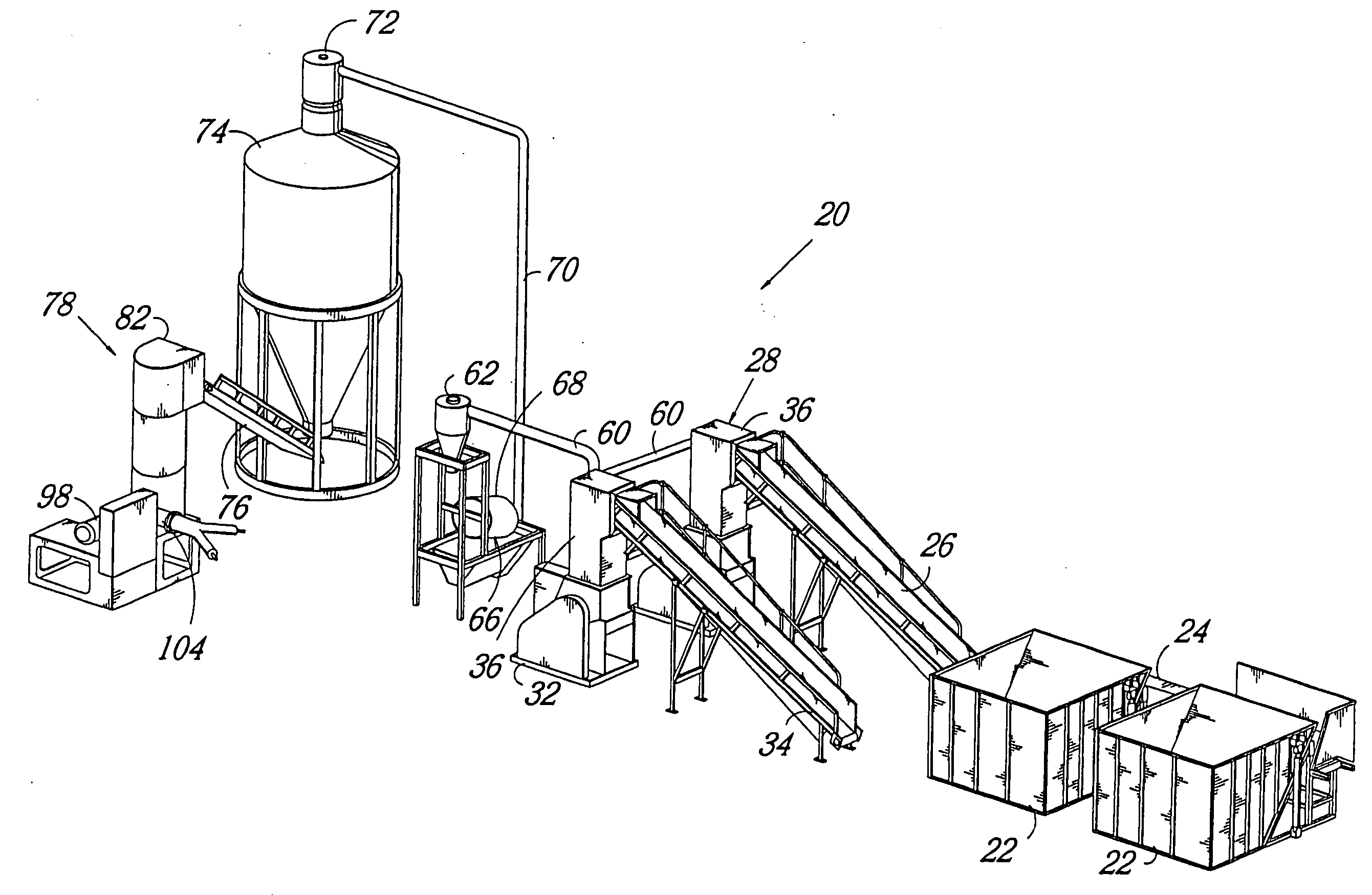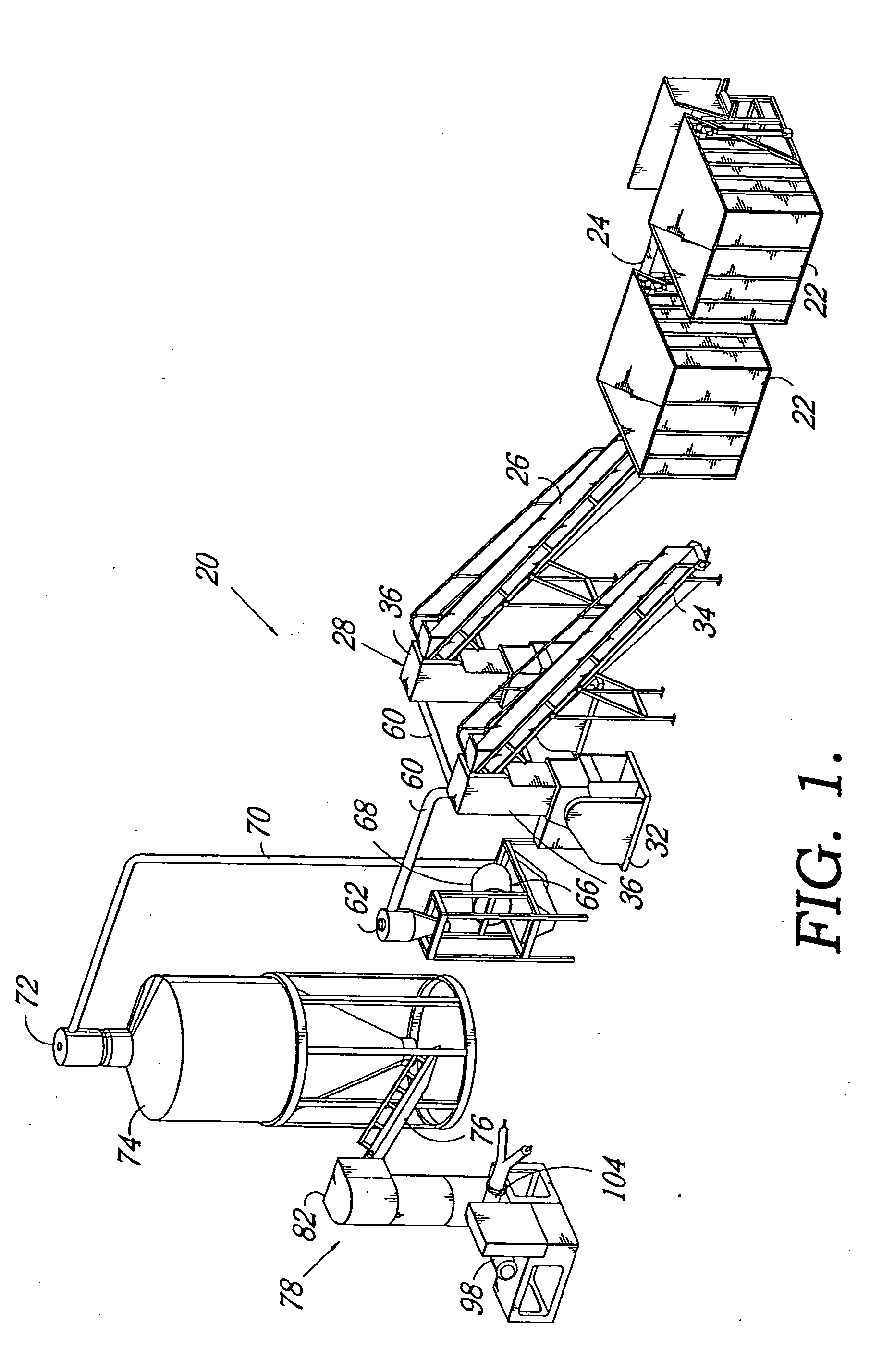Plastic recycling system and process
a plastic waste and recycling system technology, applied in the field of plastic waste recycling system and process, can solve the problems of complex systems, serious community waste, environmental problems of landfills, etc., and achieve the effect of enhancing the frictional melting of plastic was
- Summary
- Abstract
- Description
- Claims
- Application Information
AI Technical Summary
Benefits of technology
Problems solved by technology
Method used
Image
Examples
Embodiment Construction
The recycling system and process of the present invention is suitable for numerous different types of plastics. Table 1 below indicates the various types of plastics that can be recycled together in the system of the present invention and typical sources of those types of plastics and their abbreviated names.
TABLE 1FORMAL NAMEABBREVIATIONSOURCEPolystyrenePSbutter, margarine containers,drink cups, foam used forpackingPolyvinyl-PVCbiscuit trays, packaging, gardenchlorideshoses, electric appliance partsPolypropylenePPbottle caps, food containers, icecream containers & lids, plantpots, rubbish bins, potato chipbags, chairs, money, bale twinePolyethyleneLDPEshopping bags, newspaper wrap,LLDPEtoothpaste tubes, cling film,HDPEshampoo containers, milkcontainers, cream containers,bread bags, milk bottles, bubblewrap, stretch film from aroundpallets, black plastic, wine&water bladdersPolyethylenePETsoft drink bottlesTerephthalate
In general, it has been found that the makeup of plastic was...
PUM
| Property | Measurement | Unit |
|---|---|---|
| angle | aaaaa | aaaaa |
| length | aaaaa | aaaaa |
| width | aaaaa | aaaaa |
Abstract
Description
Claims
Application Information
 Login to View More
Login to View More - R&D
- Intellectual Property
- Life Sciences
- Materials
- Tech Scout
- Unparalleled Data Quality
- Higher Quality Content
- 60% Fewer Hallucinations
Browse by: Latest US Patents, China's latest patents, Technical Efficacy Thesaurus, Application Domain, Technology Topic, Popular Technical Reports.
© 2025 PatSnap. All rights reserved.Legal|Privacy policy|Modern Slavery Act Transparency Statement|Sitemap|About US| Contact US: help@patsnap.com



